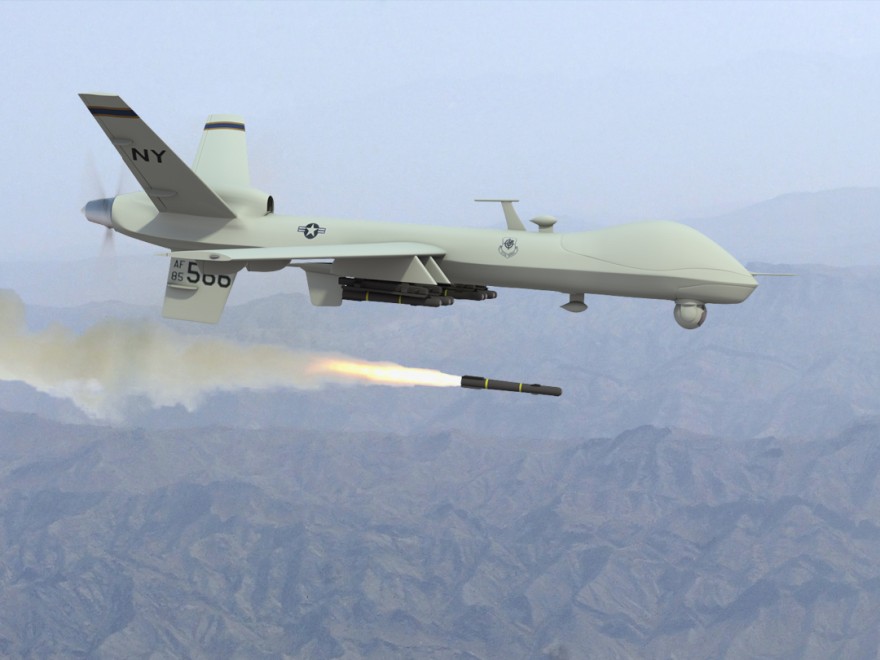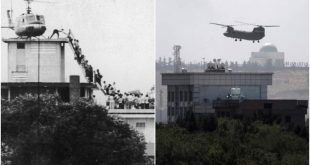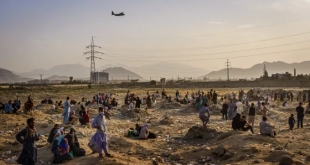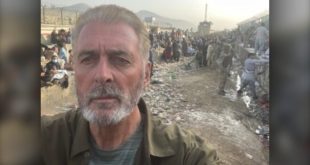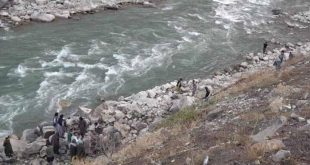US Military in Afghanistan reacted to UNAMA’s report on civilian casualties, saying US forces fighting in a complex environment against those who intentionally kill and hide behind civilians
AT News Report
KABUL: The United Nations Assistance Mission in Afghanistan (UNAMA) released a report on Wednesday saying that at least 30 civilians were killed and 9 were wounded in a US airstrike in Farah province.
The United States’ airstrikes on alleged drug-processing facilities on 5 May 2019 in Afghanistan, determines that the operation caused a large number of civilian casualties. The report also examines the legal framework applicable to this incident.
However, the U.S. Forces-Afghanistan (USFOR-A) issued a statement rejecting the UN report and maintained that there were no casualties.
In June 2019, the UN Assistance Mission in Afghanistan (UNAMA), together with representatives of the Afghanistan Independent Human Rights Commission, conducted a site visit to areas impacted by the strikes in Farah province’s Bakwa district, as part of its extensive fact-finding into the 5 May incident, the UNAMA’s report said.
The UN verified 39 civilian casualties, among them 14 children and one woman, from multiple airstrikes on more than 60 sites that the United States Forces-Afghanistan (USFOR-A) identified as drug-production facilities in Bakwa district and in parts of the neighbouring Delaram district of Nimroz province.
Moreover, the UN is working to verify credible reports of at least 37 additional civilian casualties, the majority of whom were women and children.
Although airstrikes on alleged drug-processing facilities had taken place before, this was the first time that UNAMA had received reports of a large number of civilian casualties resulting from such an operation.
USFOR-A assessed there were no civilian casualties resulting from the airstrikes. The United Nations understands that according to longstanding United States policy, economic objects that contribute to the war effort of a party to a conflict are considered legitimate military objectives.
However, according to international humanitarian law, including international customary law, facilities that contribute economically or financially to the war effort of a party to a conflict are considered civilian objectives.
The report, jointly produced by UNAMA and the UN Human Rights Office, concludes that drug facilities and associated workers may not be lawfully made the target of attack and should be protected.
The United Nations maintains that considering these objects and individual’s legitimate targets dangerously erodes the fundamental principle of distinction, placing the broader civilian population and infrastructure at risk.
The report sets out a number of recommendations, including that the appropriate – and legal – response to illicit drug activity is through law enforcement, not military operations that endanger civilians.
Meanwhile, the US-forces in a statement said that US forces in Afghanistan concerned by the way UNAMA reached its conclusions and disagrees with their mischaracterization of the Taliban in the methamphetamine production facilities; their reliance on sources with conflicted motives or limited knowledge (including the Taliban propaganda website “Voice of Jihad”): and their narrow definition of legally targetable combatants.
By the time US forces decided to conduct precision strikes, intelligence and operations professionals knew what the Taliban narcotics production facilities looked like, exactly where they were and who was allowed entry, the statement added.
“US forces and partner organizations also knew the pattern-of- life for their operations and locales. Under US legal definitions and rules and policies governing the conduct of war, and after exhaustive and comprehensive review of the facilities and those running them, US forces and partner entities determined personnel in the labs were members of the Taliban and lawful military targets.”
The precision strikes against Taliban methamphetamine labs and Taliban combatants in the early hours of May 5,2019 accurately targeted and struck sources of Taliban revenues used to fund ongoing indiscriminate violence against innocent Afghans-such as car bombs, rockets and roadside explosives which kill schoolchildren and families, the statement added.
US forces deliberately chose the targets and timing for the strikes to avoid non-combatant casualties, striking during daylight hours to maximize the ability to obtain and share site pictures which ensured we could verify the absence of civilians. On the day of the operation, US forces observation of the targeted sites used multiple surveillance platforms, including aircrafts with full-motion video gathering capabilities. US forces pre-strike processes included scores of hours of scrutiny of the targeted sites to ensure we could verity non-combatants were not present.
US forces had the degrees of certainty required at the time of the precision strikes to assess forces were only striking legal targets and avoiding non-combatant casualties and collateral damage.
“US forces even declined to strike nearly a dozen Taliban production facilities due to even a slight possibility for civilian casualties.”
The investigations leading to the identification and characterization of these methamphetamine production facilities, their ownership and oversight by the Taliban, the internal rules allowing entry only to Taliban combatants, as well as the flow of funds from these locations to Taliban operations, were combined operations run with Afghan Security partners, the statement added.
The Operations against these Taliban revenue sources were planned and developed over the course of a year, drawing upon the expertise and resources of a wide array of interagency and inter-governmental organizations and relying upon extensive intelligence collection.
The requirements for manufacturing methamphetamines meant the Taliban production facilities presented a unique signature for intelligence, surveillance and reconnaissance assets.
US forces focused on identified facilities for deeper intelligence exploitation and analysis before choosing targets for the strikes. US forces and partner deliberate investigation and observation involved hundreds of hours of wiretaps; Afghan police and intelligence operations on the ground; hundreds of hours’ scrutiny by airborne intelligence assets; hundreds of hours of assessment by intelligence and financial experts; and examination by other technical means.
“In addition to imagery collection during the precision strikes, US forces conducted exhaustive assessments of the facilities and surrounding areas after the strikes. Similar examinations of affected areas were conducted by Afghan partners. Combined assessments determined the strikes did not cause deaths or injuries to non-combatants. Contemporaneous statements from Afghan ministries and local official s and examinations of the scenes by independent media reinforce US forces’ assessment of lack of civilian casualties.”
According to the statement, the US forces is fighting in a complex environment against those who intentionally kill and hide behind civilians, as well as use dishonest claims of non-combatants casualties as propaganda weapon.”
It furthered, the US forces holds itself to the highest standards of accuracy and accountability and is unceasing in efforts to mitigate harm to non-combatants and collateral damage. The Taliban cannot say the same and Daesh and al Qaeda intentionally murder the innocent.
“US forces took extraordinary measures to avoid the deaths or injuries of non-combatants. Members of the US forces recognize and value the duty to be precise. US forces owns every munition it fires. This sense of accountability pervades the ethos of the mission. When mistakes are made in this challenging environment, US forces owns them and does what it can to make amends and ensure they are not repeated. This is not such a case.”
 Afghanistan Times
Afghanistan Times
